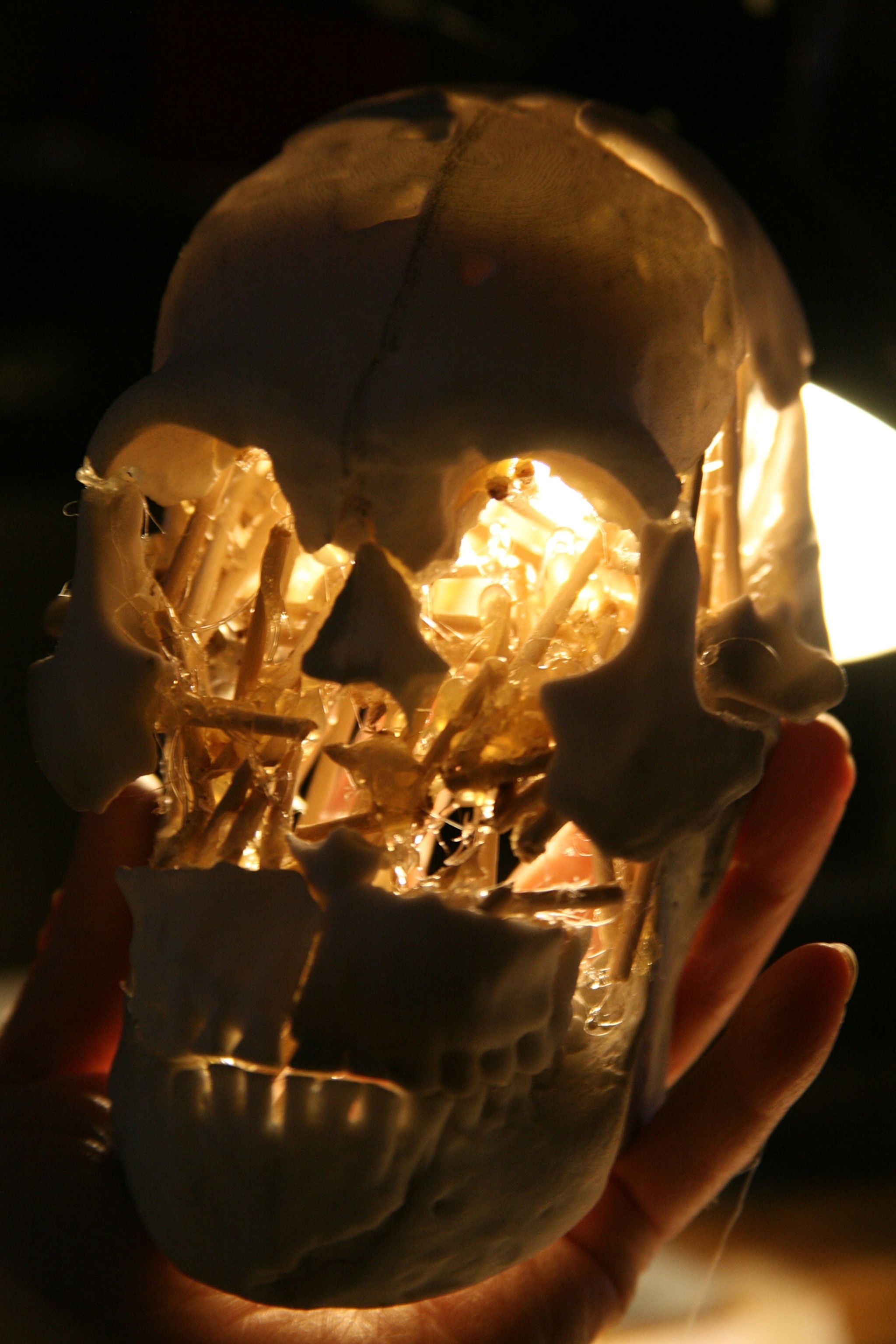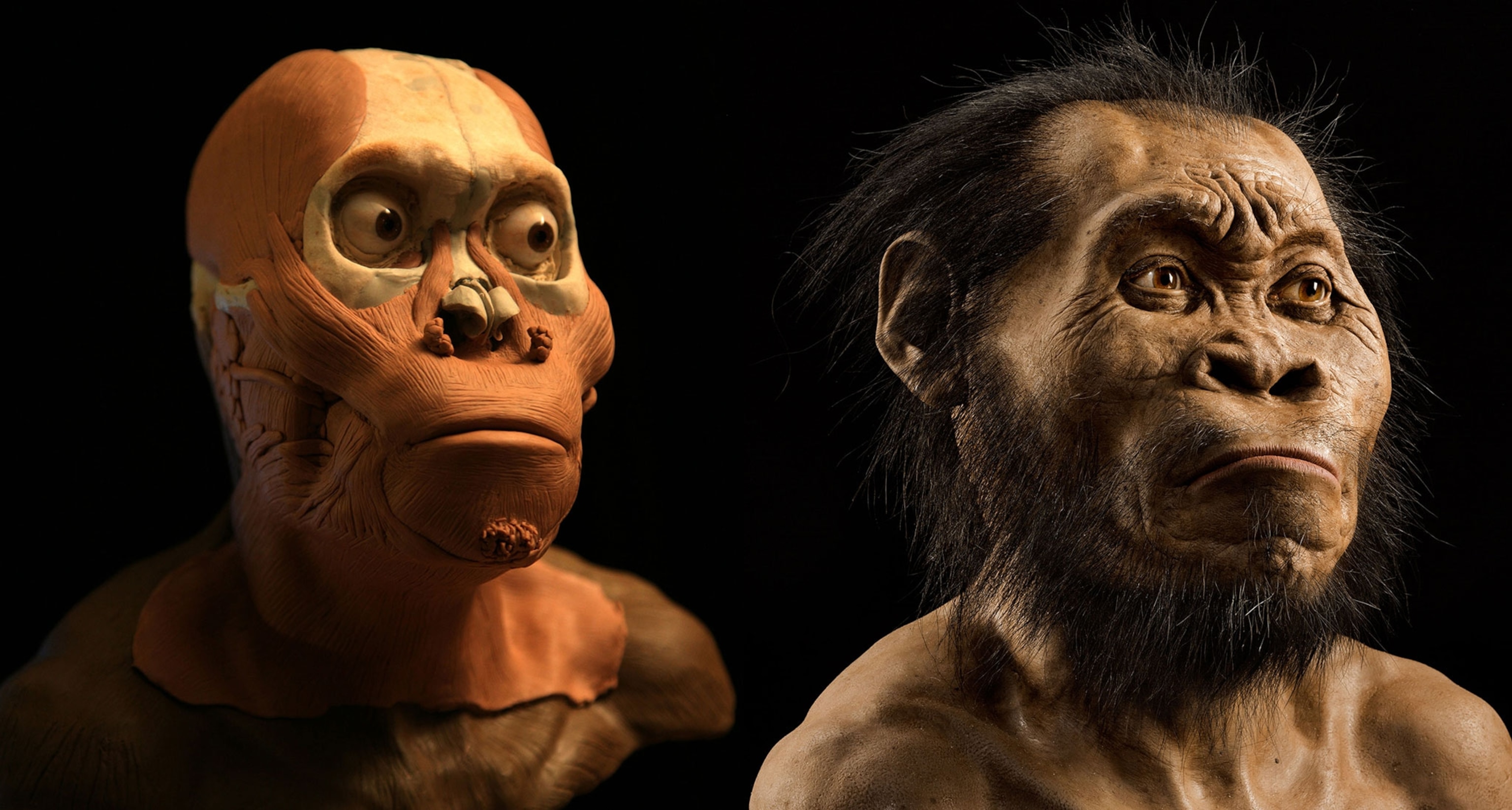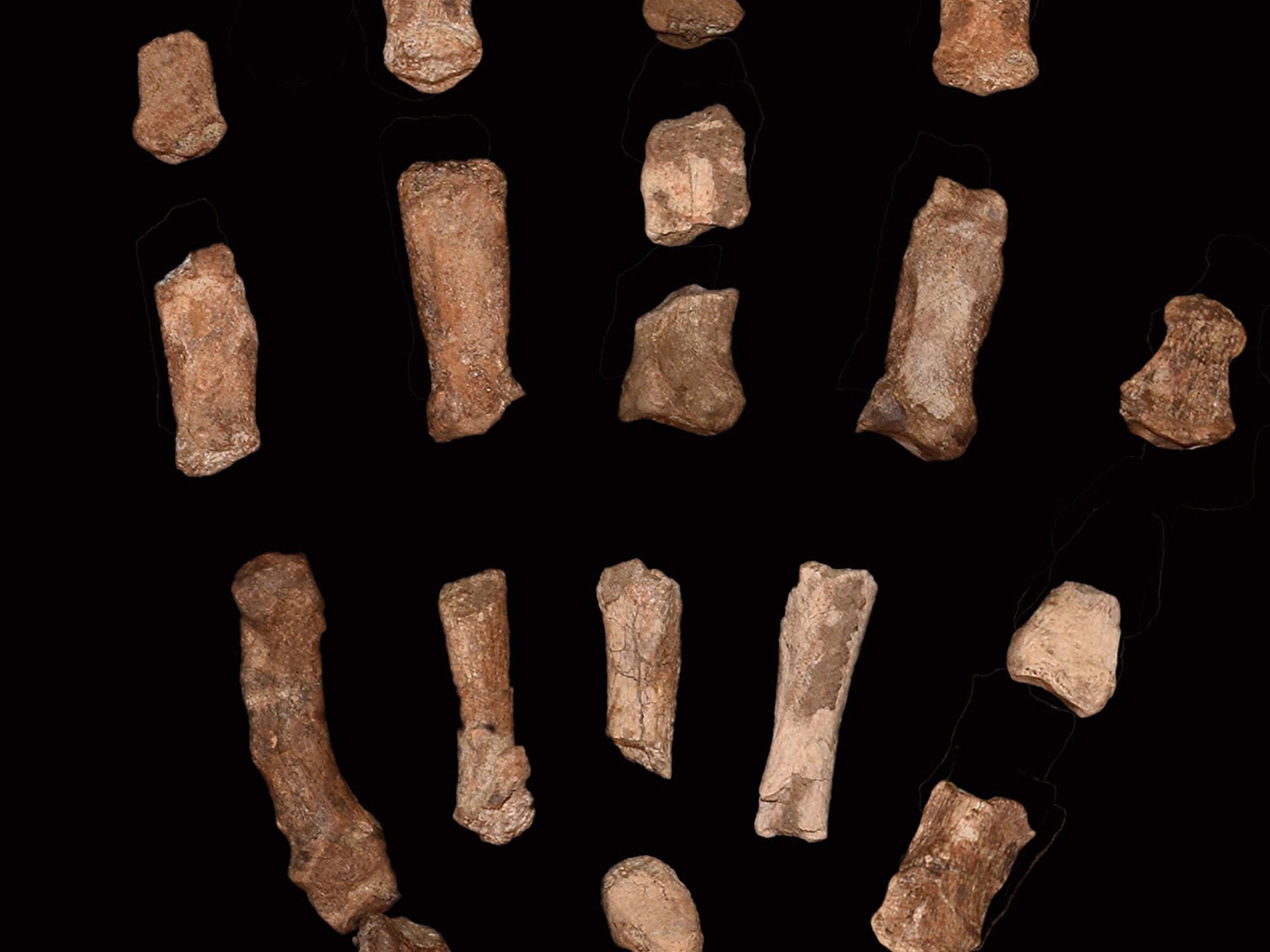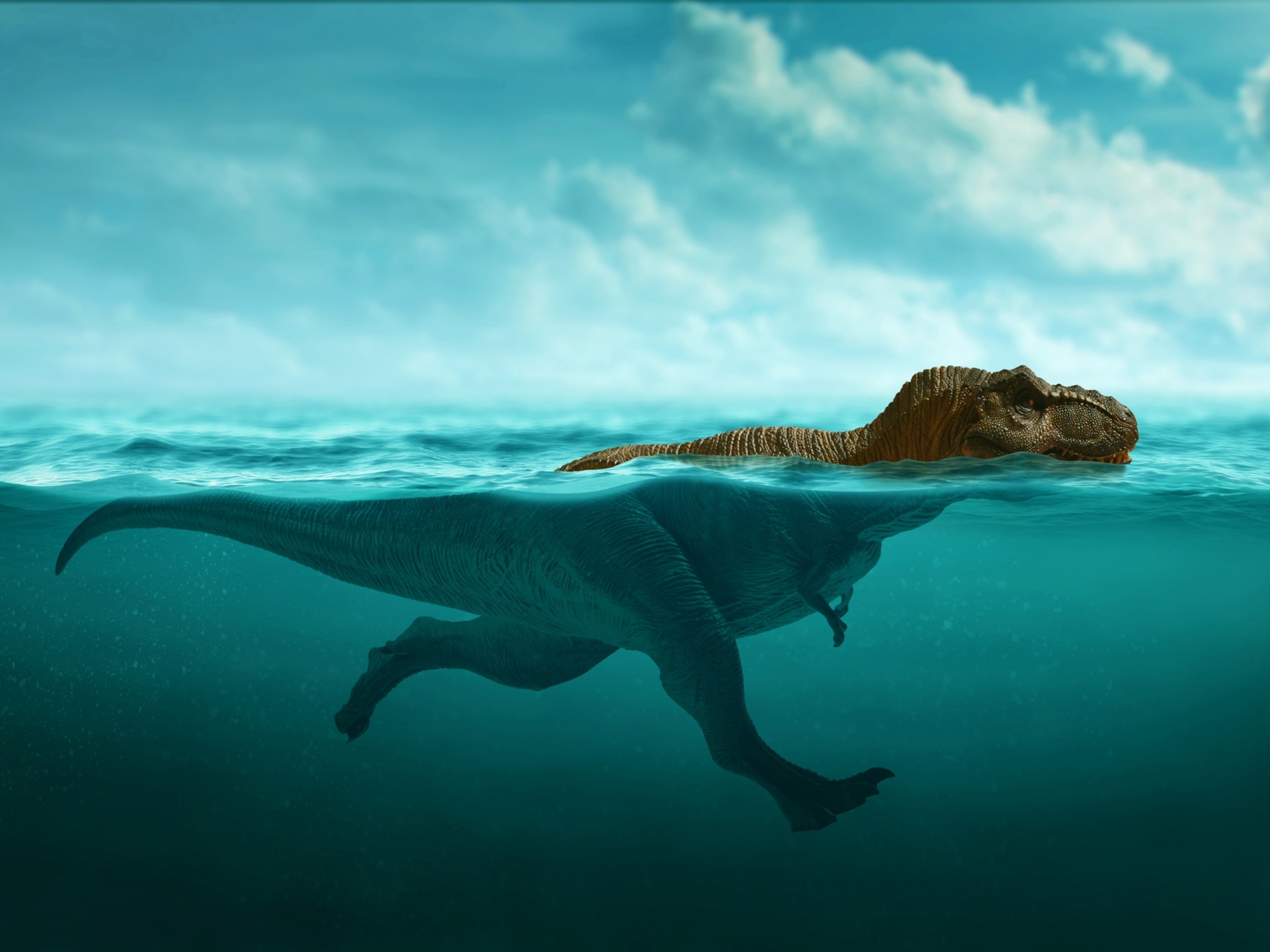Meet the Man Who Gives Ancient Human Ancestors Their Faces
Paleo artist John Gurche created Homo naledi’s face by making hundreds of minute anatomical calculations.
We don’t know how old our newfound ancestor Homo naledi is, or how precisely the species is related to us. One thing we can see, now, is what it looks like—thanks to a fossil-based reconstruction created by paleoartist John Gurche.
“It was wonderful watching this thing come to be over time,” says Gurche, whose Homo naledi bust has been seen by millions of people on the Internet since it was unveiled last week.

Gurche is the artist in residence at the Museum of the Earth in Ithaca, New York, and one of a small handful of experts who forensically reconstruct faces of long-dead hominins.
He has created similar busts of other ancient human relatives, including Homo floresiensis, a diminutive hominin sometimes referred to as the Flores hobbit found on the Indonesian island of Flores in 2003, and Australopithecus sediba, discovered by paleontologist Lee Berger in South Africa in 2010. Both have helped complicate our picture of the human family tree.
“I love it when someone hands me a skull," Gurche says, "and I get to be the guy that figures out what it looks like.
The first step is measuring bones, paying attention to the size of eye sockets and to where jaw muscles insert to gauge how large or small they were during life, plugging those and many more measurements into a 70-page worksheet to make minute anatomical calculations.
"I don’t know what the face is going to look like till the end of the project," he says. "It’s often a surprise even to me.”
Starting With a Skull
In reconstructing naledi, Gurche started with a composite of two skulls discovered with over 1,500 other fossils in a hard-to-reach South African cave.
(Read more about the Homo naledi discovery here.)

The bones showed a strange mix of the more modern characteristics of the genus we belong to, Homo, as well as primitive ones associated with earlier Australopithecus species, leading scientists to conclude that the bones must be the first of their kind to be discovered.
They named the new species Homo naledi, after the cave where the bones were found.
(See what other scientists are saying about Homo naledi.)
Gurche traveled to South Africa in 2014 after the team of cavers had finished excavating the fossils and spent nearly two weeks measuring, drawing, and photographing the remains.
He brought plastic casts of the skull home to his workshop in upstate New York to form the base for Homo naledi’s face. Over the next four and a half months, he calculated measurements for Homo naledi’s facial features, layering modeling clay over the plastic cast to create muscles and connective tissues.
“You can often see traces of the internal anatomy on the final form,” Gurche says. He then molds the face in silicone—a material that shares the translucent vibrancy of skin. Then it's time to install eyes and hair, and make final color adjustments.

A physical anthropologist by training, Gurche never thought he'd end up working in an artist’s studio.
“I had such wonder and awe for this phenomenon of humans evolving, and I couldn’t really find a place for that in the scientific work,” he says. He found it in art instead, painting murals in exhibits at the Smithsonian Museum of Natural History and working on dinosaur illustrations and models for books, National Geographic magazine, and movies.
“That’s great to take an exotic vacation in the Mesozoic,” Gurche says, referring to his work recreating the creatures and landscape in the time of the dinosaurs, “but working on human ancestors is like coming home.”
Follow Rachel A. Becker on Twitter.





